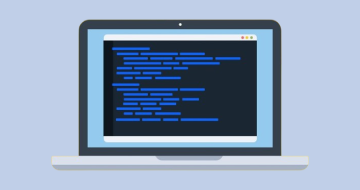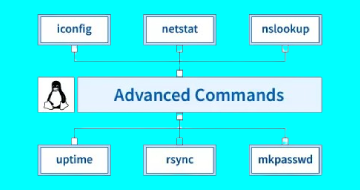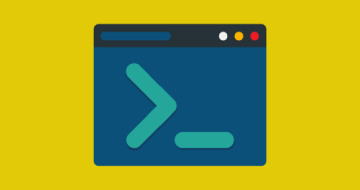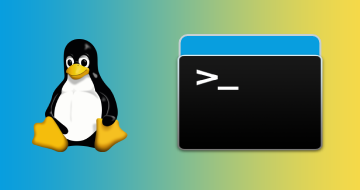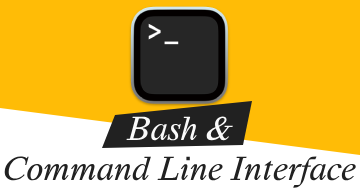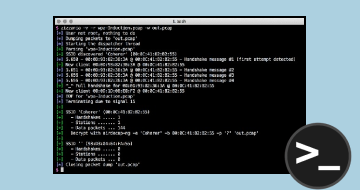IIRF Online > IT & Software > Operating Systems & Servers > Linux Command Line > Learn Linux administration and linux command line skills
Learn Linux administration and linux command line skills by Udemy
Linux administration and Linux command Line skills from scratch. This Linux course is for all level learners.
Course Highlights
- Become a professional Linux administrator and be able to apply for Linux jobs.
- Understand Linux networking, user account management, processes, and file permissions.
- Manage your computer entirely through the command line.
- Automate tasks and schedule jobs with Cron in Linux.
- Creating simple shell scripts and execute basic BASH scripts.
- Gain the ability to automate tasks and manage systems with shell scripts.
- Gain advance Linux systems administration skills and have deep understanding of Linux fundamentals and concepts.
- Learn multiple Linux commands for system administration.
- Gain a complete understanding of Linux and fill in any existing knowledge gaps.
- Installation and working with CentOS and Redhat versions 7 and 8.
- Be able to create, support and manage Linux servers in a corporate environment.
- Be able to better troubleshoot servers and get started with automating tasks.
- Design on your own career path from scratch as a Linux Professional.
- Complete Linux Training and Guide: A detailed Linux course discovery complete as you need it.
- At the end of the course, you will have a full understanding of the Linux operating system and be able to put that knowledge to practical use.
- Linux technical interview questions for preparation to get and secure new job opportunities.
Skills you will learn!
Curriculum
1 Topic
Course Overview
12 Topics
Install VirtualBox
Download CentOS Linux
Install CentOS Linux
Download Install and connect through putty
Installation of CentOS 9
Install Red Hat 8 with Custom Partitioning on VirtualBox
Download SUSE LINUX Enterprise Server
Install SLES 15 (SuSE Linux Enterprise Server)
Install SLES 12 SP3 with expert partitioning on VirtualBox
Different ways of accessing your Linux server
Red Hat enterprise Linux RHEL 9 download and Installation
Installation of Kali Linux
17 Topics
The Linux Directory Structure
The Shell
Basic Linux Commands cd ls cat pwd and more
Listing Files and Understanding LS Output
Changing Password
Absolute vs relative Path
Finding help at the command line
Creating Files and Directories
Understanding the Basic File and Directory Permissions
Changing File Permissions
Modify File Ownership for user and group
Finding Files in your system
Introduction to vi editor
Copying Directories and Files
Removing Directories and Files
Moving and renaming Directories and Files
Quiz
32 Topics
more and less command
head and tail commands
Tab Completion
Command History
Wild Cards
Soft and Hard Links
Input Output and Error Redirection
grep
pipe
Shell Aliases
echo command
Environment Variables
Connecting from one server to another
Transferring and Copying Files over the Network
Counting Words Lines and Characters
Viewing and Monitoring Processes
Schedule and automate tasks with Cron
User and group administration
Switching Users
The sudo utility
Compressing and archiving files tar gzip
Displaying and Setting the Hostname
Find you IP address
tr sort diff and uniq command - Text File Manipulation
cut and sort command - Text File Manipulation
32-bit vs 64-bit operating systems
Finding system information (uname dmidecode)
Root Password recovery
sosreport for Redhat troubleshooting
Monitor Users (who last w id)
Message of the day (motd) and wall
Quiz
9 Topics
Red-hat/CentOS/Fedora software installation using YUM
Package management using RPM
Introduction to Repositories
Create a Local Repository
System updates and preparation (version lock)
Roll back patches and updates
Installing Software in SUSE Linux using Zypper
Installing software in Ubuntu
Quiz
13 Topics
User and group administration
Create a User account with No Login Access
The passwd command
Password Aging on User accounts
Create Modify and Delete Group Accounts
Activating and Deactivating Shadow Password Mechanism
User Authentication Files
The passwd File
The shadow File
The group File
The gshadow File
Switching Users
The sudo utility
9 Topics
Introduction to partitioning and file system
Introduction to LVM - The Logical Volume Manager
Add a new disk through Oracle Virtual Box
Managing Storage with parted
Creating Physical Volumes (PVs) Volume Groups (VGs) and Logical Volumes (LVs)
Extending Volume group (VG) and Logical Volumes (LV)
Mirroring Logical Volumes
Moving Volumes (Data) from one storage to another
Removing Logical Volumes (LVs) Volume Groups (VGs) and Physical Volumes (PVs)
12 Topics
What is Shell Scripting
Naming Convention for Shell Script
Shell Scripting Format
How to Run a Shell Script
Text Editor vi Introduction
Creating first script - Hello World
Defining variable
Arithmetic Expressions in Shell Scripting
String Manipulation in Shell Scripting
String Comparisons in Shell Scripting
Read and Echo (InputOutput) statements
Relational Operators in Shell Scripting
9 Topics
Network Components
Network Classes
TCP and UDP Protocols
The OSI model
Ping Command
Network Interfaces configuration files and commands
Find your IP address
Add a Network Adapter through Oracle VM Virtual Box
NIC Bonding
4 Topics
Apache Web Server
LAMP Server
MongoDB Server
MySQL Server
2 Topics
Firewall and iptables
Linux Server Security
17 Topics
Understanding processes
Viewing and Monitoring Processes
Listing a Specific Process
View Processes by User and Group Ownership
Process States
What is Process Niceness?
Viewing and Changing Process Niceness
Renicing a Running Process
Control Processes with Signals
Job Scheduling
Controlling user access
Scheduler Log file
Scheduling with at command
Submit view list and remove an at job
Using crontab
Syntax of User Crontab Files
Add list and remove a Cron job
45 Topics
Linux Basic Technical questions
System Administration questions - 1
System Administration questions - 2
System Administration questions - 3
Troubleshooting part 1
Troubleshooting part 2
Troubleshooting part 3
1- How to find files that are over 10 MB in size
2- How to show lines containing #
3- Display all lines of a file with line numbers
4- Find system information such as the version or release info
5- Where are the files located for network interfaces?
6- Find an installed package?
7- How to find out total lines in a file without opening that file?
8- How to find disk usage by the largest directories?
9- How to find all directories named conf under /?
10- How to find files not accessed in over 3 days?
11- How to view difference between 2 files?
12- Which system configuration files should be backed up regularly?
13- How to view currently logged in users?
How to extend SWAP space?
How to extend a logical volume?
How to reduce the logical volume and is it possible to reduce it on the fly?
How to scan disks for existing volume group and logical volume?
How to activate deactivate disable/enable a logical volume and a volume group?
What is the default size of a physical extent in LVM?
List the available logical physical volumes info in detail
How can you show all lines except any lines starting with the #?
How can you continuously monitor log files for errors?
Remove files older than 7 days automatically by creating a cron job
How to list all created users on the system and send(redirect) them to a file?
How to list only the 2nd column from a file?
How to broadcast a message to all logged -in users
How to schedule a server reboot in 15 minutes
How to prevent users from deleting other users files in a directory
How to display 10th line of a file?
How to restore a hacked server?
How to secure a newly built server?
Which file is the most commonly known to check for log messages?
How and why to disable ping?
Explain the different fields in passwd file
Which command can tell how long the system has been running?
How to check if a port is listening?
Server down troubleshooting
How to find all files in bin with specified (755) permissions?
16 Topics
What is Linux?
Linux Distributions
Run Levels
Targets
Updating Kernel
What is SSH?
When is SSH used?
How to configure SSH?
Securing SSH
Transferring Files with scp and sftp
Configure Private-Public Key-Based Authentication
The OpenSSH Service
OpenSSH Versions and Algorithms
Encryption
Authentication Methods
OpenSSH Packages
57 Topics
Linux boot process RHEL 6 and 7
User Authentication Files
The passwd File
The shadow File
The group File
The gshadow File
pwck and vigr
Activating and Deactivating Shadow Password Mechanism
Adding Users and default values
The passwd command
Creating a User Account with Default Values
Creating a User with Custom Values
Create a User account with No Login Access
Password Aging on User accounts
Modify and Delete a User Account
Switching users
The sudo utility
Create modify and delete group accounts
Managing Groups with gpasswd Command
User and System Shell Startup Files
Using YUM for Managing Software Packages
Using RPM for Software Package Management
Redhat Subscription Management Service
ssh questions part 1
ssh questions part 2
Introduction to the Bash Shell
Variables
Input Output and Error Redirection
Command History
Tab Completion
Tilde Substitution
Regular expression GREP
Metacharacters - Wild Cards Pipe
Create an Interactive script
Copying Directories and Files
Moving Renaming Directories and Files
Removing Directories and Files
File and Directory Control Attributes
Finding Files
Soft and hard links
Understanding File and Directory Permissions
File Types
Modifying File Permissions
Default Permissions and umask
Directory structure
Modify File Ownership and Group Membership
Basic commands 1
Basic commands 2
Basic commands 3
Special Permissions setuid setgid and sticky bit
Listing and Modifying System Timezone
Counting Words Lines and Characters
Using compression and archiving tools
User administration questions 1
User administration questions 2
User administration questions 3
Virtualization
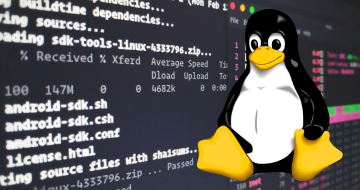
Learn Linux administration and linux command line skills

